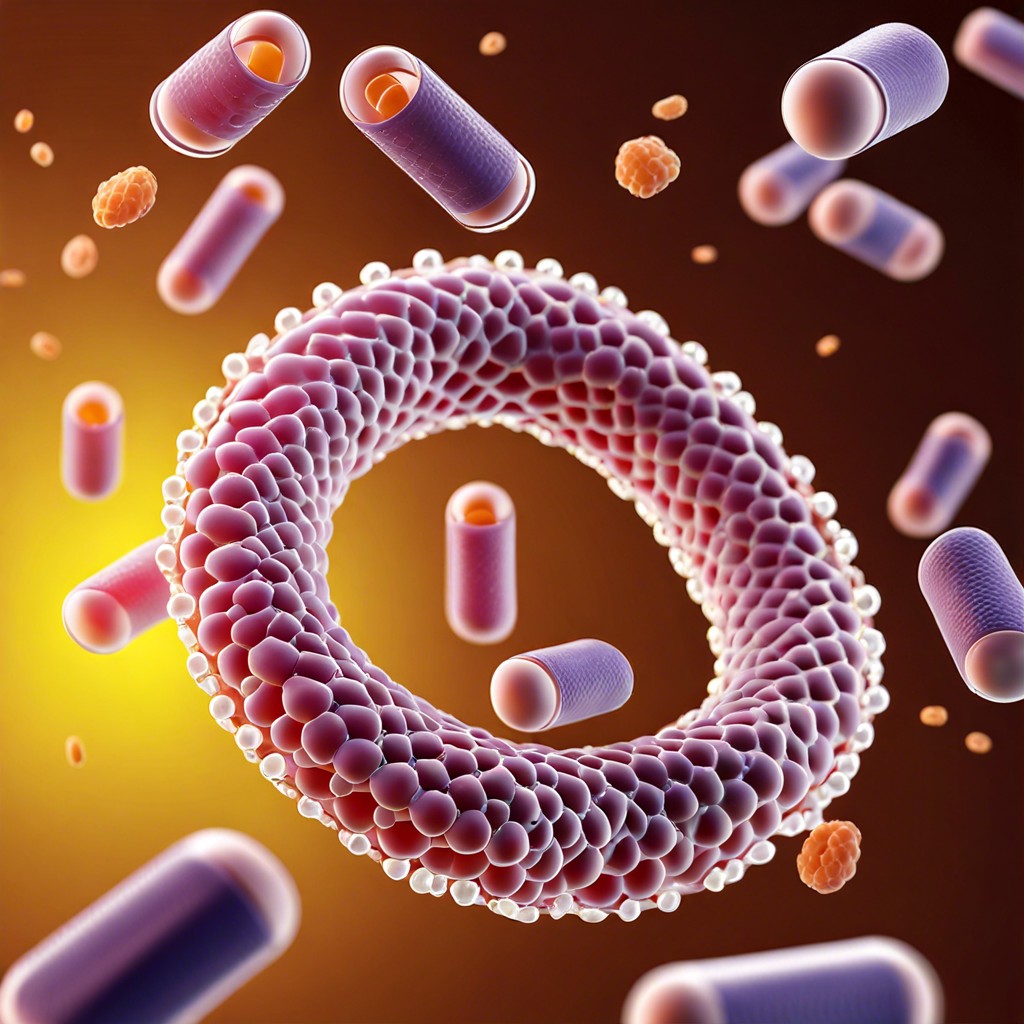Want to know how PLGA polymer is making waves in construction and beyond?
Key takeaways:
- PLGA is biocompatible and non-toxic, making it ideal for medical applications.
- PLGA is biodegradable, breaking down into harmless byproducts.
- Synthesizing PLGA involves mixing lactic acid and glycolic acid to form a copolymer chain.
- PLGA has various applications in biomedical research, including tissue engineering and drug delivery.
- Research is focused on achieving controlled degradation, scaling up production, reducing costs, and understanding immune reactions.
Biocompatibility

PLGA is like that one friend who gets along with everyone. Its biocompatibility means it plays nice with human tissues. This is crucial in medical applications.
Why does it blend in so well?
First, it breaks down into lactic and glycolic acids, both of which your body already knows how to process. No weird, foreign substances sticking around to cause trouble.
Second, its byproducts get metabolized and exit your body naturally. No long-term residue hanging around.
Oh, and it’s non-toxic. This is pretty much a no-brainer when it comes to medical use. Use something poisonous? Not ideal.
Scientists also dig it because it doesn’t provoke a major immune response. No angry cells attacking it, which keeps things calm and drama-free.
In essence, it’s like the VIP pass for materials used in medical devices, drug delivery, and tissue engineering. And everyone loves a VIP.
Biodegradability
PLGA doesn’t stick around forever, and that’s a good thing! This polymer gradually breaks down in the body. Here’s how it works:
Firstly, water molecules sneak into the polymer chains, causing them to fall apart. Imagine a chain link fence slowly rusting into pieces. These smaller fragments continue to break down until they become lactic acid and glycolic acid – both of which are naturally present in the body.
The coolest part? The body can handle these acids – they’re processed and removed without a hitch. It’s like the polymer came, did its job, and then gracefully exited without leaving a mess.
This zero-waste performance makes PLGA particularly charming for biomedical applications. Think medical sutures, drug delivery systems, or even tissue engineering.
So, PLGA’s disappearing act with no harmful residues makes it a star performer in the polymer world.
Synthesis of PLGA
To craft PLGA, you typically start with its two main ingredients: lactic acid and glycolic acid. These two acids are like the peanut butter and jelly of the polymer world. Mix them together in the right way, and they form a copolymer chain, linked by ester bonds.
The synthesis process is usually achieved through a method called ring-opening polymerization. Imagine it as opening a series of tiny molecular hula hoops and then linking them together in a long chain. Sounds whimsical, doesn’t it? Okay, maybe just a little.
A catalyst, which you could think of as the master of ceremonies, helps speed up this linking process. Without a catalyst, these acids would take forever to mingle.
The ratio of lactic acid to glycolic acid can be adjusted to tailor the properties of the final polymer. More lactic acid? You’ll get a firmer, slower-degrading product. More glycolic acid gives you a faster-degrading, more pliable material. It’s like adjusting the sweetness in your lemonade recipe—it changes the end result quite noticeably!
Once synthesized, PLGA needs to be purified to remove any unreacted monomers or catalysts. This cleaning step ensures that the final product is safe and effective for its intended use, especially in medical applications where you don’t want any unwelcome surprises.
Applications to Biomedical Research
Imagine a tiny courier service inside your body. That’s PLGA for you in biomedical research. Here’s why this polymer is a superstar:
First, it makes great scaffolds for tissue engineering. Think of it like the perfect trellis for growing new cells, supporting them till they can stand on their own.
Then, we have drug delivery. PLGA can house medications and release them slowly over time. It’s like having a time-release capsule tailored just for you.
Vaccines? Yes, it’s in those too. PLGA helps deliver vaccine components effectively, ensuring your body gets the best shot at building immunity.
And for a touch of drama, there’s gene therapy. PLGA carriers can smuggle genes into cells, correcting genetic disorders like secret agents on a mission.
What’s even more intriguing? PLGA is totally biocompatible, so your body gives it a thumbs up instead of throwing a tantrum.
Prospectives and Research Gaps
PLGA has been making waves in the polymer world, but like all superheroes, it has its own kryptonite (metaphorically speaking, of course). One area researchers are zooming in on is achieving even more controlled degradation rates. Imagine baking a cake and wanting it to stay fresh exactly for three days. Tricky, right? Same goes for PLGA.
Next up, scaling up production. It’s like trying to make grandma’s cherished cookie recipe for an entire city. However, a stable, consistent production could lead to world domination—well, at least in biomedical applications.
And then we’ve got the cost. Right now, PLGA can be a bit like trying to buy a coffee in an upscale café daily—high-quality but pricey. Finding ways to trim those costs while keeping up performance is on the to-do list.
There’s also the nagging issue of immune reactions. Although PLGA is generally loved by the body, occasionally it gets the cold shoulder. Researchers aim for more detailed studies to understand why.
Finally, blending PLGA with other materials could unlock new superpowers. Think of it as the Avengers assembling—stronger, more versatile.
While PLGA’s future shines bright, these challenges are what keep our polymer scientists awake at night, caffeine-fueled and ready for the next breakthrough.
Recap




